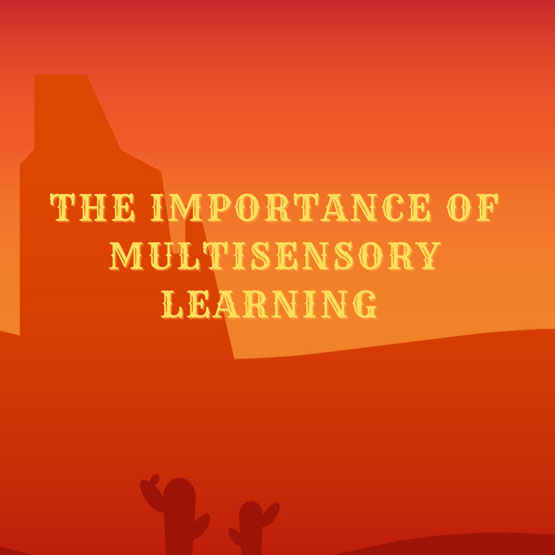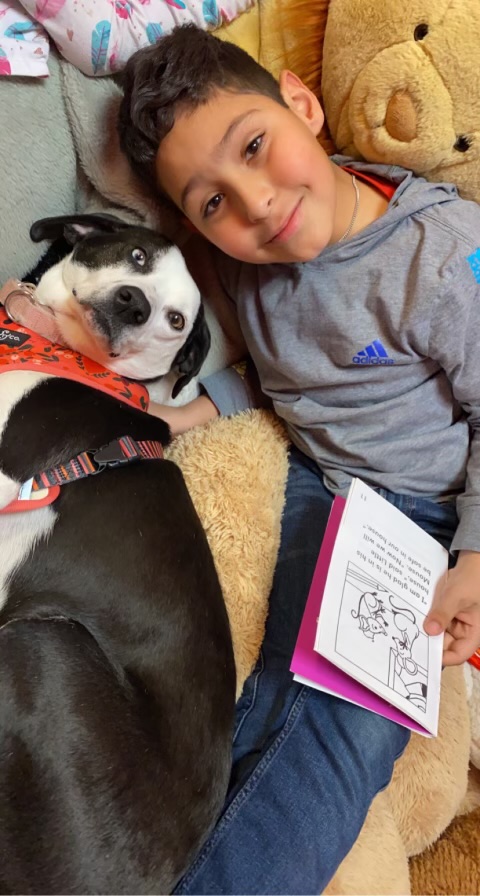How Multisensory Teaching Helps Improve Reading Skills

There are many methods to teach reading skills. Memorization, “drill/kill” worksheets, and others.
However, I feel the best way is through multisensory teaching, which has been proven highly effective in improving a student’s phonemic awareness, reading ability, and comprehension skills, just to name a few!
Students taught using multisensory methods have a deeper understanding of what they’re learning because they can see and hear, feel, and sense it. The use of multiple sensations can solidify concepts in ways that no other method can achieve.
This type of instruction is beneficial for all types of learners, including those with dyslexia, ADHD, and other learning disabilities. Multisensory teaching is also excellent for English language learners and nearly all students struggling with reading.
Benefits of Multisensory Instruction
The benefits of multisensory teaching are many. Research has shown that students taught using a multisensory approach learn more quickly, retain information more effectively, and are more engaged in the learning process than those taught using only one sense. Furthermore, students taught using a multisensory approach tend to understand the material better and are better able to apply it to real-world situations.
There are several reasons why the multisensory approach is so practical. First, when students are engaged in activities that use more than one sense, they are more likely to pay attention and stay focused on the task at hand.
Second, the use of multiple senses helps create a complete picture of the material being learned, making it easier for students to understand and remember.
Finally, the multisensory approach helps to engage more than one learning style, which means that more students will be able to benefit from the lesson.
How Parents Can Use Multisensory Approaches at Home
Multisensory teaching can be an excellent way for parents to help their children learn. Here are a few tips:
- Use manipulatives whenever possible. This will help children learn through touch and make the material more concrete.
- Use music or rhymes to help children remember information. This can be a fun way to learn, and it will also help with memory recall.
- Use visual aids, such as pictures or videos to help explain the material. This will make it more relatable for children, and they will be able to understand what you mean.
- Be patient and have fun. Don’t drill/kill your kids! Have fun and make up your own games to help.
How teachers can implement some of these concepts in their classrooms?
Another way is to use music or rhymes to help students remember information. This can be especially helpful for younger students or those with memory impairments.
Finally, visual aids, such as pictures or videos, can also help students understand the material.
Multisensory teaching can be one of your reading strategies and is a great way to improve reading skills in students. It is especially beneficial for struggling readers who have learning disabilities. It can also be used to supplement other teaching methods. Try using some of these techniques in your next lesson!
Multisensory at The Reading Ranch®
At The Reading Ranch®, our approach uses multisensory instruction in all of our lessons throughout our entire curriculum. We use our Reading Ranch Method™, which includes our multisensory methods and many other tools and techniques we have developed.
Each child learns differently and at their own pace, so our Reading Ranch certified instructors tailor each lesson to fit the individual child’s needs.
We incorporate multisensory instruction in our lessons using manipulatives, such as blocks, small toys, crazy-looking, and fun items to help decode words and teach letter combinations. Sometimes we use goofy pictures and cards for our sight words. This allows students to physically interact with the material, solidifying the phonics knowledge and skills we are targeting in the lesson.
We also have our Reading to Rover days, where the kids have one of our furry friends come and visit. That’s one of them in the photo above.
Our reading comprehension and writing classes also employ multisensory techniques to build on the basic concepts taught in our phonics and decoding classes. We often use pictures, silly stories, and outrageous examples to help explain a comprehension concept or to help with word recognition. By engaging multiple senses, the students can better understand the material being taught and remember it for future use.



Multisensory Learning
Another key to the RRM™ is using all the learning modalities in every lesson. Modalities are different ways that people learn. We all have different combinations of modalities that work best for us. VARC (visual, auditory, reading, and kinesthetic/tactile) is the acronym used to describe all the modalities. We provide instruction in each of the four modalities so that each student can find their own reading ‘sweet spot.’
Interactive Lessons
We use a multisensory approach to reading instruction that employs highly interactive lessons to create a welcoming learning environment and makes it easy for children to learn. Children learn best in an environment where they feel comfortable and express themselves.
RRM™ does not use worksheets or “drill and kill” exercises. These methods have been proven ineffective in teaching reading and often result in students feeling frustrated, discouraged, and hopeless.
Learn More
I hope I have conveyed the importance of multisensory methods for teaching reading. This method of reading instruction is a vital tool in developing our student’s literacy skills and should be used along with other reading strategies. If you have any questions or want to learn more about our Reading Ranch Method™, please contact us. We would be happy to answer any of your questions!
Contact us today and see what makes us unique and why we’re the best-kept secret in tutoring today!
